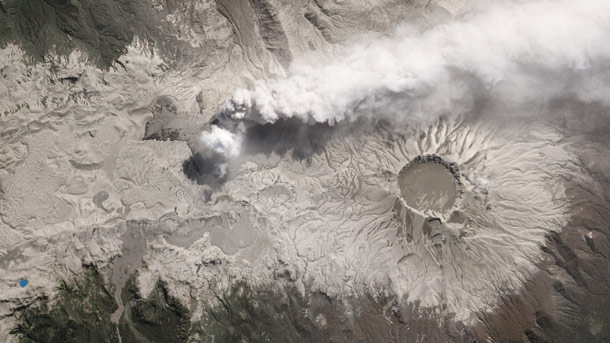Create a free profile to get unlimited access to exclusive videos, sweepstakes, and more!
Volcano in taupe

It's been a while since I posted a cool image of a volcano from space! So here's one that's simply lovely: Puyehue Cordón Caulle in Chile, which has been continuously erupting for several months now:
This was taken by NASA Earth Observing-1 satellite on January 26, 2012. The ash has been falling for so long it's covered the entire complex in a finely ground layer, coloring this area taupe (or ecru, or, as I like to call it, tan). You really should click to haphaestenate that picture; the full-sized shot is amazing. There's so much to see, like the ash cloud streaming away from that vent, the detail in the big caldera... but my favorite part I think are the sharply-colored lakes in the region, which are such a contrast to the dull brown everywhere else (you can see one of those lakes in the bottom left corner of the picture above -- look for the blue spot). For scale, the caldera's bowl is about 2 km (1.2 miles) across.
Unfortunately, as pretty as this is, the implications are not so good: the forest in that area is suffering due to all that ash. Volcanic ash is not like some small-grained powder: under a microscope you can see it looks far more like ground glass, each grain festooned with dozens of sharp corners and edges. Breathing that stuff in is not good for your lungs. And, of course, it's heavy -- it's rock, after all -- so when it falls in large amounts it can do a lot of damage, especially if it rains.
Satellite imagery of active volcanoes is critically important: some small-minded politicians might mock it, but monitoring them saves lives. And, of course, there's all the amazing science we learn as well.
Credit: NASA/EO-1
I love these satellite views of volcanoes from space, and I've collected quite a few into a gallery slideshow. Click the thumbnail picture to get a bigger picture and more information, and scroll through the gallery using the left and right arrows.]



























